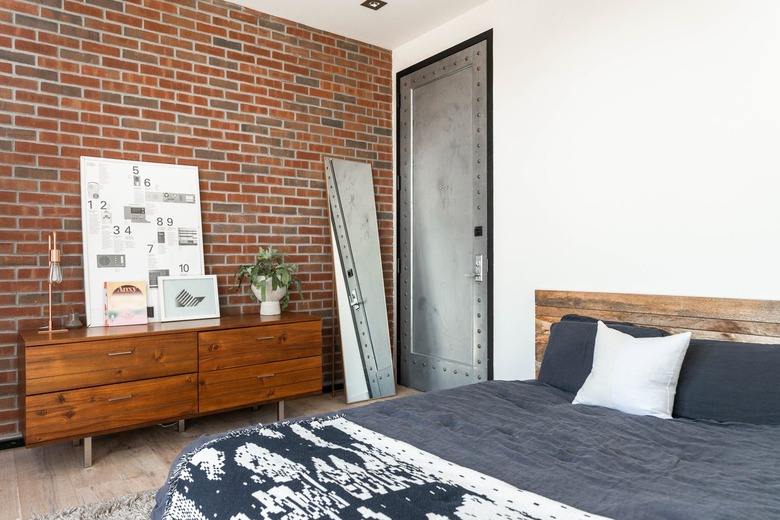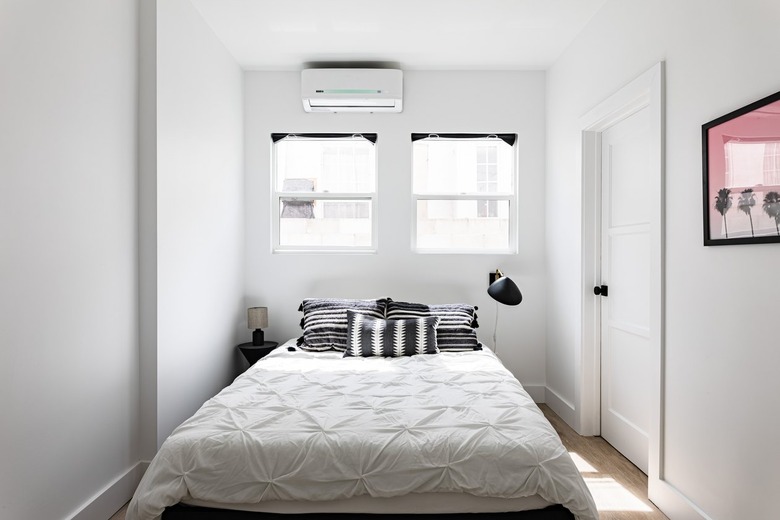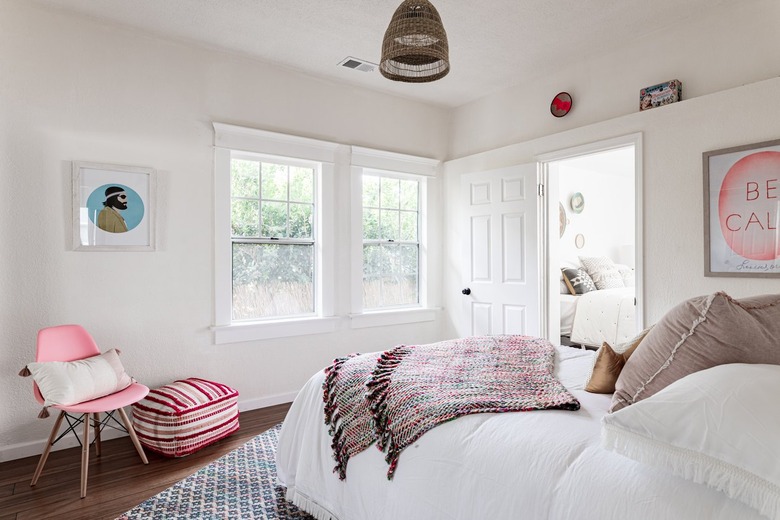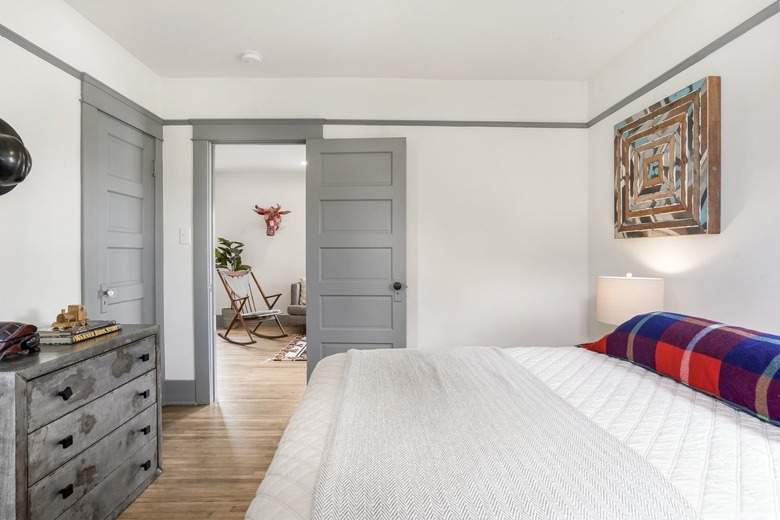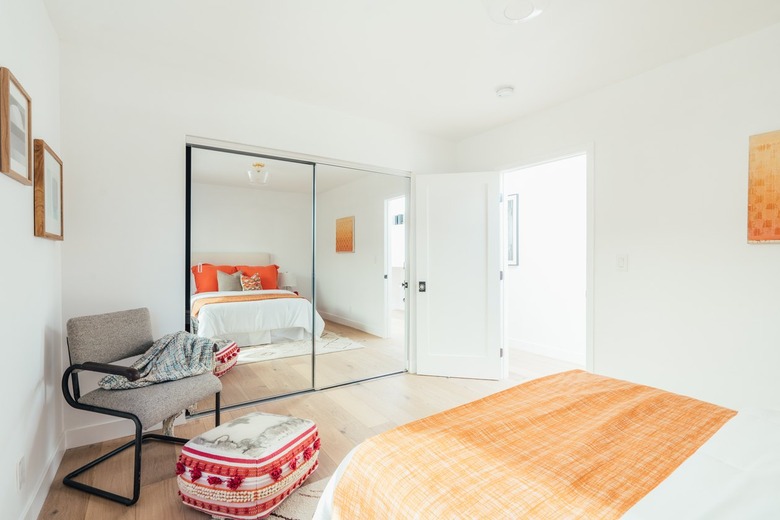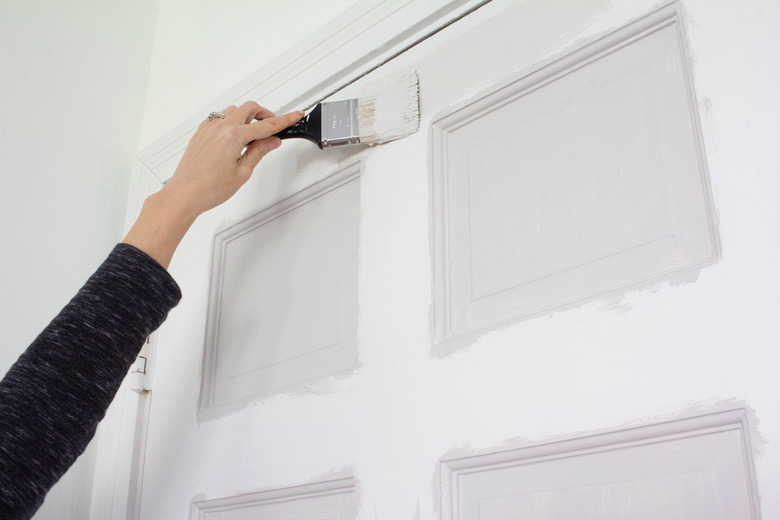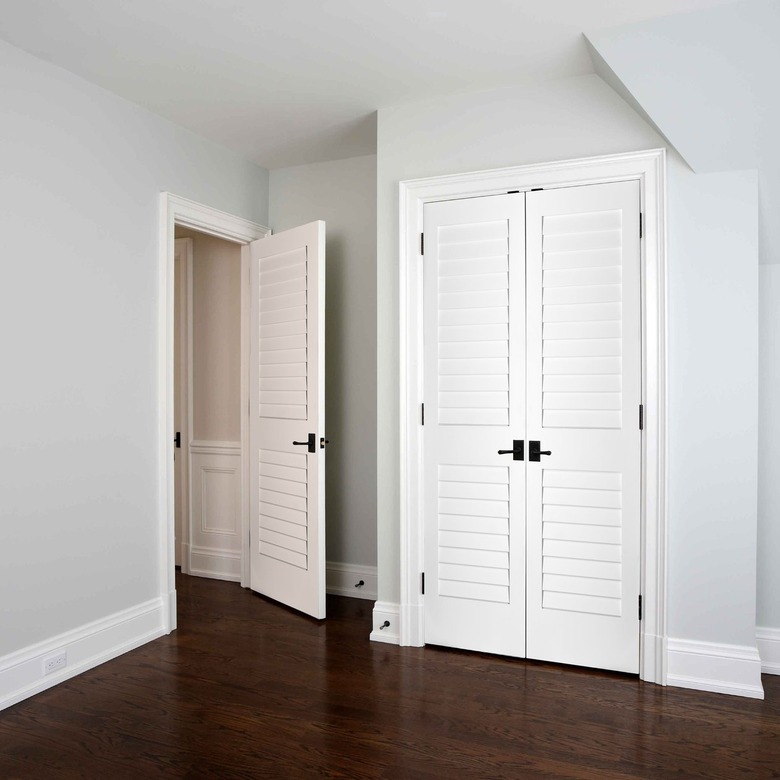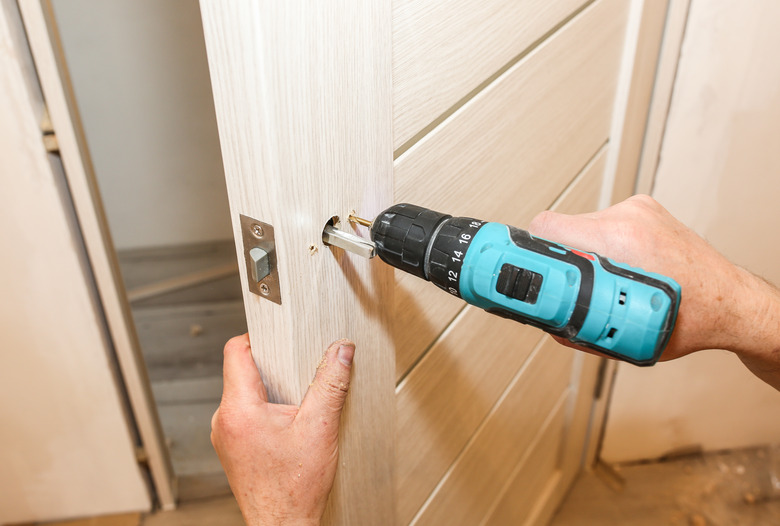How To Choose A New Bedroom Door
We may receive a commission on purchases made from links.
The main function of your bedroom door is to provide privacy, but that doesn't mean it can't be beautiful as well. The best doors are those that function seamlessly while blending with your decor and style. Even if you choose a brightly colored door for a pop of color, it can still fit into the overall look and feel of your bedroom. Fortunately, a wide variety of interior doors are available to help you find the perfect match of form and function for your space.
Whether you're just replacing your old bedroom door or you're remodeling an entire primary bedroom suite, choosing a bedroom door involves deciding on style, materials, knob location, and more.
Door Styles and Floor Space
Door Styles and Floor Space
Before you start shopping for doors, first consider the amount of space with which you're working. Basic hinged doors are the most popular type for bedrooms and are very common. They're simple and effective and come in both flush and panel designs. Hinged bedroom doors typically swing into the room when opened, and you'll need enough room to accommodate this.
If you want something with a bit more pizazz and you have a large master bedroom, a set of French doors may accent the space beautifully. In a smaller room, however, there may not be enough room to accommodate both doors when they're open. Sliding barn doors can add an interesting aesthetic as well, but you need lots of room on the wall to slide them open. Despite this drawback, barn doors are currently very popular in farmhouse-style homes.
If you're working in a really tight space, pocket doors may make the most sense. These doors slide into the wall when they open, so they take up zero space in the bedroom. However, they can be expensive to install, as they require you to remove drywall to create a "pocket" inside the wall for the door to slide.
Left-Hand Door or Right-Hand Door?
Left-Hand Door or Right-Hand Door?
When you start shopping for doors, you'll want to consider whether you prefer a left-hand or right-hand door. This refers to the direction that the door moves when it opens (and also what side the door knobs will be hung). You need enough space to swing a hinged door open and closed easily, but you must also be mindful of the space the door occupies when it's open.
Is there a closet door to the right of your bedroom door? If so, you want the bedroom door to open to the left so it doesn't block the closet entrance. Otherwise, you'll have to close the bedroom door every time you want to open the closet. Noting the placement of windows, other doors, and large furniture will help you determine which way you want the door to open.
Prehung vs. Slab
Prehung vs. Slab
When purchasing a bedroom door, you will have the option of buying a slab or a prehung door. A slab door is exactly what it sounds like — it's just a door. There's no hardware, no door frame, and no extra goodies. A prehung door, however, is already mounted inside a door frame and includes hinges and sometimes knobs (or at least the pre-drilled holes for some).
Prehung doors are much easier for DIYers to work with, but they are more expensive. They can also seem wasteful if your current door frame is in good shape and doesn't need to be replaced. If you want to recycle an antique or vintage door, having it prehung may also not be an option.
Bedroom Door Materials
Bedroom Door Materials
Wood is one of the most popular bedroom door materials, and you'll see it a lot when perusing for doors. Wood tends to be less expensive than other materials and can last many years indoors. Don't shy away from wood due to maintenance fears. It's true that wood doors need a bit of TLC when used as exterior doors, but this isn't the case indoors — unless of course you're installing it in an area of the home with high moisture levels like the bathroom or kitchen. Wood lasts for many years inside and goes with almost any decor, but it can swell and warp in a humid environment.
Another popular option is doors made from medium-density fiberboard (MDF). MDF is an engineered wood product made with wood particles bound with glue. MDF is less expensive than solid wood, and it's less prone to expansion and warpage due to humidity changes. It is very smooth and easy to paint since it's free of the knots and grain found in real wood.
Polyvinyl chloride (PVC) is another popular door material. PVC doors are durable, water-resistant, and fire-resistant. They're very lightweight and maintenance-free, but they're not strong. If security is a concern, PVC doors aren't a good choice. Glass interior doors are also available and can make excellent bedroom doors when you want a modern look and feel. Since bedroom doors serve to provide privacy, you'll want to opt for frosted glass, of course.
Hollow Core vs. Solid Core
Hollow Core vs. Solid Core
To keep them light and inexpensive, hollow core doors consist of a wood veneer or finish over a core of foam or other support materials. Hollow core doors are budget-friendly, but they don't hold up well to roughhousing children and pets. Although they work on a budget, they don't offer much soundproofing, and trimming can prove problematic.
If you need to trim a hollow core door to accommodate a settling house or plush carpet, you must do so very carefully. Because they aren't solid, trimming too much off these doors can expose their core and look unsightly.
Solid core doors are exactly what they sound like — doors that are made of wood all the way through. These doors are much better at muffling sound, are somewhat fire-resistant, and are quite durable. They are heavier, though, and solid core doors are usually more expensive than hollow core doors.
Bedroom Door Finishes
Bedroom Door Finishes
If you purchase a PVC or glass door, it will typically come ready to hang: You choose the color or finish you like, and the door arrives ready to go. However, there are more choices when buying a wood door — like staining, which brings out the natural grain of the wood and enhances its coloring. A major bonus of a stained door is that requires no further attention except for the addition of door hardware.
Prefinished doors take things a step further. These doors get stained or painted the desired color by the manufacturer and come ready to hang. The hardware is already installed on these doors.
Tip
If you want to paint or stain the door yourself, you can opt for an unfinished door or a primed door. Primed doors are sealed and coated with a primer that makes paint adhere to them very well. Unfinished doors, however, lack even this basic coating. They're already sanded, but that's it. You'll need to handle any priming and painting or staining yourself as well as the installation of the hardware.
Bedroom Door Costs
Door costs can vary widely depending on the size, style, and material of the door you choose. Make sure you keep your budget in mind when shopping, as costs can spiral out of control quickly. Labor installation costs usually run an average of $70 an hour, and you'll need to factor that into your costs unless you're doing the job yourself.
A basic prehung bedroom door can cost as little as $60 or over $1,000. They cost an additional $100 to $300 if they are professionally installed. French door prices vary widely as well. You can pick up a set of interior French doors for as little as $500, but you can easily pay $4,000 or more if you're looking for something elaborate. There usually isn't much in the way of additional labor costs for French doors if you're swapping one set for another since they install in a manner similar to other prehung doors. If you're adding French doors where there was a smaller door before, however, expanding the doorway and making alterations can add to installation costs significantly.
If you go with a pocket door, timing will have a big impact on the price you pay. It costs about $140 to $180 to install a pocket door when you're building a house. Retrofitting one of these doors after the fact, however, can cost $600 to $1,000 or more.
DIY or Call a Pro?
DIY or Call a Pro?
As always, when it comes to DIY projects, the decision as to whether or not to hang your new bedroom door yourself comes down to your level of experience and confidence. Most mechanically savvy people can install a prehung door with very little drama. Slab doors, however, are a much tougher project to tackle.
Be it a prehung door or a slab door, know that door installation sometimes requires quite a bit of tweaking. Unless your house is brand new, settling due to age means the structure is no longer perfectly square. This can lead to a lot of trimming and shimming when installing a door. Get this wrong and your bedroom door might be difficult to open, or it may try to swing shut on its own. There can also be visible gaps around the door.
Other Considerations and Ideas
Accessibility Considerations
If you're replacing bedroom doors and someone in your home uses a wheelchair or walker, you may want to give serious consideration to French doors. These doors open quite wide and can easily accommodate assistive devices. Pocket doors can do so as well since the door slides into the wall when open and does not encroach on the doorway at all.
Noise Blocking
Although not always a factor, lean toward solid core doors for bedrooms whenever your budget allows. Solid core doors block noise much more effectively than their hollow counterparts, and this is an important consideration when you're trying to sleep. This is especially true if you work nights or often find yourself trying to sleep when others are awake and active in the home.
Opt Out of Trends
Be cautious when choosing barn doors as well. Though trendy and aesthetically pleasing, barn doors don't lock or even latch like other doors. A barn door simply hangs a piece of wood over your doorway. It provides some privacy, but there will be gaps around the door even when it is closed. This isn't an issue if you live alone or with your significant other, but it may be if you have children or roommates.
Consider Dutch Doors
If you want a truly unique or unconventional look without sacrificing practicality, consider a Dutch door. Reminiscent of stable doors, Dutch doors feature two halves, so you can open the top half of the door but leave the bottom closed. This creates an interesting look, but it can also serve a purpose. For example, it's a great way to keep the dog out of the room at nap time while still making it easy to listen for the baby.
